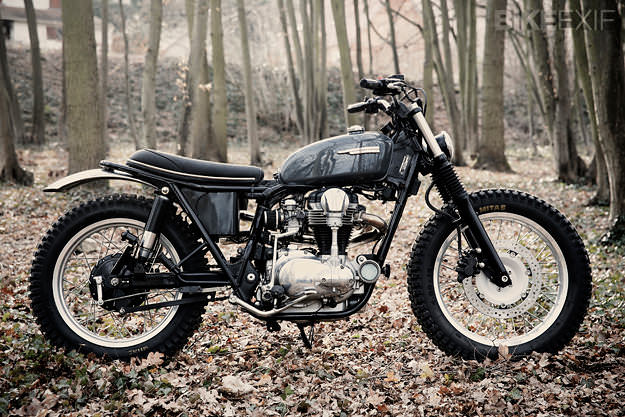Clasic Japanese motorcycle
The history of the W1 can be traced back to 1960 and the early K1, a motorcycle developed by the Japanese motorcycle manufacturer Meguro. Meguro had first started producing motorcycles back in 1909 and had modeled the K1 on the English BSA A7 as a replacement for their single cylinder Meguro Z7.
It was early days, and most Japanese motorcycle manufacturers at the time were basically building bikes copied from American and European models, particularly in the large displacement categories.
For its day, the K1 was an advanced design and showcased modern-day manufacturing techniques with its Air-Cooled , 4-stroke, Twin OHV 496cc engine mounted in a double-cradle frame.
In 1960, Meguro Works entered into a business relationship with Kawasaki Aircraft Company Ltd., leading to a full merger in 1963. Therefore, although the K1 was developed and produced by Meguro, selling it was left to Kawasaki Motor Sales Co., the forerunner of Kawasaki Motorcycle Co.,Ltd. At the time, the Kawasaki engineers were so deeply engaged in the development of a 4-stroke engine for small cars that they had no time to develop anew motorcycle engine. But by the end of 1962 the four-wheel project had ended and some of these car engineers transferred to Meguro and took over the project. There were two projects that the developers had to tackle: the SG (a single-cylinder 250cc OHV) and the K1.
However, the engineers still wanted to overcome some basic design flaws in the K1 engine. Because the sales side wanted to maintain the impressive appearance and dignified look of the K1, it was decided to remodel the engine only, and in 1965 they remodelled the engine only, and in 1965 the remodeled K1 was introduced as the K2. (The changes included increased oil pump capacity, improved crankshaft bearings, etc. The Y-shape cover, the distinctive feature of the W models, was adopted at this stage.)
However, both the K1 and K2 still shared the basic weak points of the BSA A7. The K2 was exported to the US for a test in response to the expanding American market for 4-stroke motorcycles. Unfortunately, it was rejected for a lack of power.
The answer was the W1 which was developed as a large, high-performance, 4-stroke based on the K2. With this new model, the basic problems found in the lubrication system (already improved in the K2)and the weakness in the crank's big end durability was solved by going to a built-up crank. But their was insufficient time to implement the intended changes in the valve train (making it an O.H.C.). As far as the frame was concerned, the conventional tubular frame from the BSA A7 was used unchanged.
The frame building technology that Kawasaki inherited from Meguro was the quite advanced for its time, and most of the models following the K1 adopted tube frames because they were comparatively easy to make. Even though Kawasaki had developed a 4 stroke engine much earlier, the K1,K2 and W1 were typical 4-stroke motorcycle models for their day and were, so to speak, textbook models reflecting the then-current design and production technologies.
The W series entry into the US market was rather unsuccessful because it was too similar to the K models in basic structure and lacked a feeling or impression of being "new". The W models also mimicked too much the look of the BSA A7 for an American tastes, even though internally the engine was much improved from the BSA.
The W1 engine featured the larger bore of the K models and included a separate primary drive and transmission. The frame welding techniques came directly from the K models. Prior to the W1 Kawasaki only sold 2-strokes on the US market, but with the debut of the W1 it joined Honda in becoming one of the first Japanese motorcycle manufacturers to produce 4-strokes.
While Honda had produced only 4-strokes from the beginning, Kawasaki's entry into the US the market was based on predictions of increased sales for large displacement 4-strokes in the near future.
The 624cc engine of the W1 was one of the first large-displacement Japanese motorcycles. However, the way motorcycles were used in America was quite different than expected and the W1 was found "unsuitable" for the American market. On the other hand, in Japan it was well received and became famous for its unique OHV vertical twin sound and individual style.





